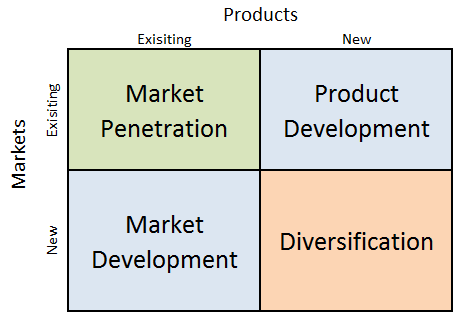
Starbucks Ansoff Matrix is a marketing planning model that helps the multinational chain of coffeehouses to develop its product and market strategy. Ansoff Matrix focuses on four different strategy options businesses can use. These are market penetration, product development, market development and diversification. Ansoff Growth Matrix Starbucks uses all four growth strategies within the scope of Ansoff Matrix. 1. Market penetration. Market penetration refers to selling existing products to existing markets. Starbucks usually has the largest share in the majority of markets it operates. The world’s largest coffeehouse chain relies on its integrated marketing strategy to pursue market penetration strategy. Specifically, the Seattle-based coffee chain effectively positions itself as a third place away from work and home. 2. Product development. This strategy implies developing new products to sell to existing markets. The global coffeehouse chain pursues product development strategy aggressively. The company sells many variations of coffee, tea and other beverages and a variety of fresh food items, including snack under the brand names of Starbucks, Teavana, Seattle’s Best Coffee, Evolution Fresh, Ethos, Starbucks Reserve and Princi. 3. Market development. Market development strategy is associated with finding new markets for existing products. It is one of the main growth tools actively used by Starbucks Corporation. Started with only one coffee shop in Seattle’s 1912 Pike Place in 1971, the company has expended into 84 markets with 17133 company-operated stores and 16700 licensed stores as of October 3, 2021.[1] 4. Diversification. Diversification involves developing new products to sell to new markets and this is considered to be the riskiest strategy. The world’s largest coffeehouse chain engages in diversification sparingly. Rare occasions of diversification by Starbucks include selling CDs with own musical compilations. Starbucks Corporation Report contains the above analysis of Starbucks Ansoff Matrix. The report illustrates the application of the…
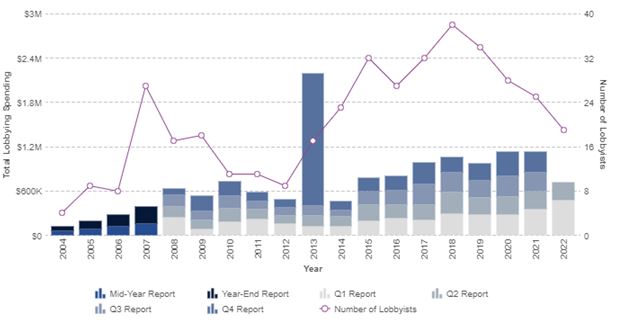
PESTEL is a strategic analytical tool and the acronym stands for political, economic, social, technological, environmental and legal factors. Starbucks PESTEL analysis involves an analysis of potential impact of these factors on the bottom line and long-term growth prospects. Political Factors in Starbucks PESTEL Analysis Starbucks sales are affected by a wide range of political factors, directly and indirectly. The patterns of sourcing raw materials have evolved into a significant political factor that affects the business in a direct manner. Specifically, nowadays it has become compulsory for Starbucks and other global businesses to engage in sourcing of raw materials complying to environmental and social norms that are becoming stricter. Neglecting such norms intentionally or unintentionally are likely to cause political pressure on the business. Starbucks performance can also be affected by the level of relationships between the USA and countries that produce coffee beans, as well as, countries where Starbucks operates. Additional political factors affecting the business include political stability in the country, the impact of home market lobby groups and a wide range of non-government organizations. Labour Union Issues Labour unionisation can be mentioned as a stark political factor within PESTEL analysis of Starbucks. The coffee chain has ongoing issues with unionisation of its workforce for many years, but this problem escalated last year with increasing numbers of employees willing to join unions. This was one of the main reasons for the return of Howard Schultz as CEO for the third time. The world’s largest coffeehouse chain strongly opposes unionisation of its workforce and occasionally engages in contradictory practices to express its opposition. For example, in May 2022 the company announced a pay raise for all non-unionized workers and in August 2022 Starbucks sent formal complain to National Labour Relations Board (NLRB) questioning the fairness of the…

SWOT is an acronym for strengths, weaknesses, opportunities and threats related to organizations. The following table illustrates Starbucks SWOT analysis: Strengths 1. Extensive, but focused brand portfolio 2. High profit margin and solid financial position 3. Market leadership in the global scale 4. Customer services and brand positioning 5. Increasing presence in emerging economies Weaknesses 1. Overly dependence on the US market 2. Overly expensive prices 3. Brand image weakened due to a number of incidents 4. Extensive dependence of revenues on Arabica coffee beans price 5. Imitable products and competitive advantage Opportunities 1. Diversification of business 2. Increased focus on organizational ethical behaviour 3. Entering into strategic cooperation 4. Reforming the pricing structure 5. Increasing focus on mobile ordering Threats 1. Leadership failure by new CEO Laxman Narasimhan 2. Dramatic increase of coffee beans costs 3. Decline in consumption of coffee due to health concerns 4. Emergence of direct and indirect competition 5. Disruption in supply-chain Starbucks SWOT Analysis Strengths in Starbucks SWOT Analysis 1. Starbucks Corporation maintains an extensive, yet highly focused brand portfolio. At the same time, all brands belonging to Starbucks portfolio including Teavana, Tazo, Seattle’s Best Coffee, Evolution Fresh, La Boulange and Ethos are popular drinks and beverages of premium class. The company also sells merchandise products such as coffee- and tea-brewing equipment, Verismo® System by Starbucks, mugs and accessories, packaged goods, books and gifts. Starbucks is able to apply its competitive advantage and extensive experience in the promotion and sales towards each product within its portfolio thanks to the shared features of these products associated with high quality for a premium price. 2. In fiscal year 2021 Starbucks generated consolidated revenues of USD 29,1 billion an increase of 24% compared to the previous year. The global coffeehouse chain enjoyed a…

Howard Schultz has been at the helm of Starbucks leadership for more than two decades in total. He is rightly credited for making the business the world’s largest coffee retailer with 17133 company-operated stores and 16700 licensed stores in 84 markets employing 254,000 people.[1] On June 2000 Howard Schultz stepped down and assumed a new position as chief global strategist to focus on international expansion in general and expansion in China in particular. New internally promoted CEO Orin Smith oversaw store count to increase to 10000 locations with more than USD 5 billion annual sales. However, at the same time Starbucks market share at US decreased due to increased competition from McDonald’s, Dunkin’ Donuts and other competitors. Schultz returned at the helm of Starbucks leadership as CEO on January 2008 in the middle of global financial crisis to replace Jim Donald, who had succeeded Orin Smith in 2005. After a series of massive changes such as closing many underperforming stores, re-training employee and enforcing fair trade in coffee supply-chain, Schultz stepped down as CEO for the second time and became executive chairman. Kevin Johnson was appointed as a new Starbucks CEO effective from April 2017. Kevin Johnson admitted having ‘venti-sized shoes to fill” referring to successful leadership by Howard Schultz. At the same time, the new CEO stated “I’m not going to fall into the trap of trying to be Howard. I’m going to be authentic to who I am as a person and who I am as a leader”[2]. Howard Schultz returned for his third stint as CEO on April 4, 2022. This time the role was interim CEO until more suitable person is found. The main reason for his latest return was to actively block attempts by baristas to form unions. In September 2022, former CEO of Reckitt Benckiser…
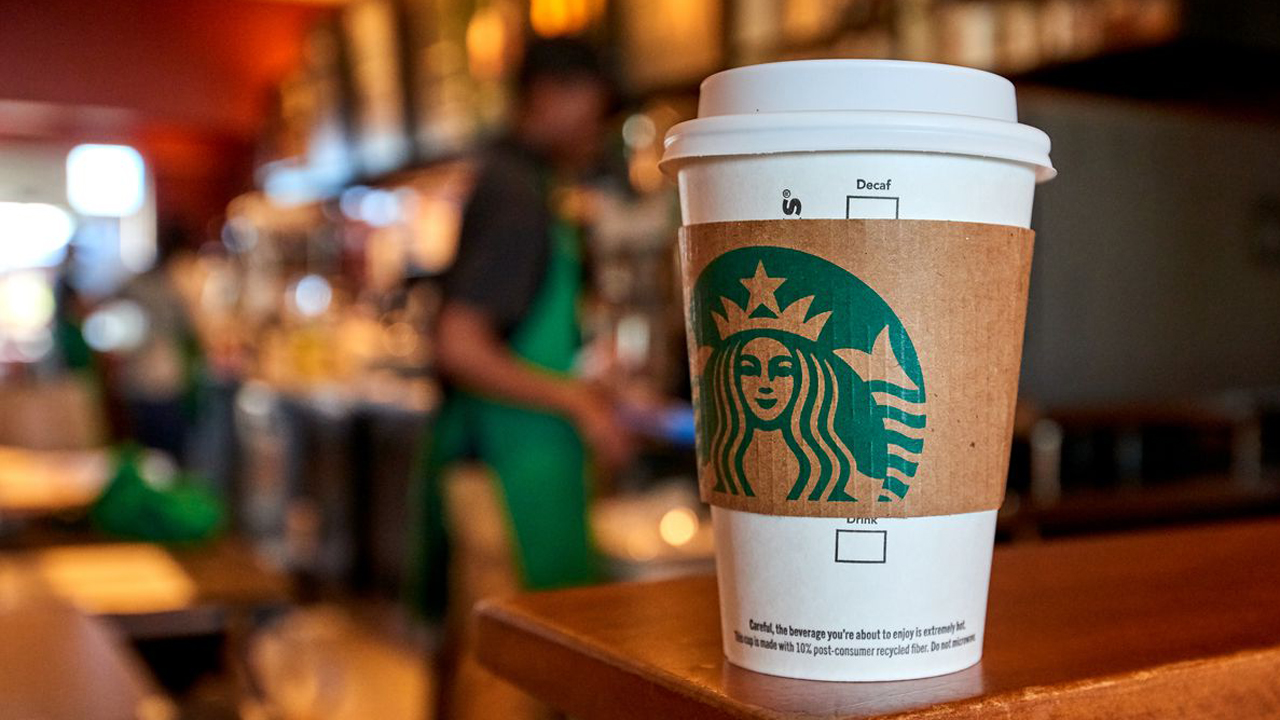
Starbucks business strategy is based on the following four pillars: 1. Offering ‘third-place’ experience. Starbucks stores are effectively positioned as a ‘third place’ away from home and work, where people can spend time in a relaxed and comfortable environment with their friends or alone. Customers are even welcome to get their work done in a Starbucks store. All company-owned stores in the US and most company-owned stores abroad offer free wi-fi. “Starbucks stores are meticulously designed to make customers stay longer, buy more, and return for another visit.”[1] After returning as CEO for the third time in April 2022, Howard Schultz announced his plans for the company. Plans include building drive-through in 90% of new locations and machinery that will allow baristas to handle increasingly complex customer orders more quickly. Some analysts note that while drive through may increase profit martin, at the same time they may compromise the essence of third place experience for customers. Furthermore, according to Starbucks Chief Marketing Officer Mr. Brady Brewer the Seattle-based coffee chain is also creating digital third place. Mr. Brewer shares his vision the global coffeehouse chain creating a new global digital community on the basis of Web3 in general and NFTs (non-fungible tokens) in particular.[2] 2. Selling coffee of the highest quality. Starbucks business strategy can be classified as product differentiation. Accordingly, the coffee chain giant focuses on the quality of its products and customers pay premium prices for high quality. Excellent customer services as one of the solid sources of Starbucks competitive advantage further increases the attractiveness of the coffee retailer. The multinational chain of coffeehouses duly recognizes the paramount role of its employees in customer-facing positions to sustain high level of customer service. Accordingly, the company refers to its employees as partners and offers them a wide…
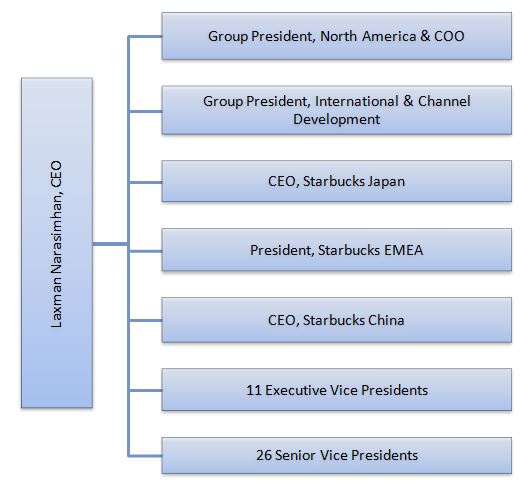
Starbucks corporate structure sustains international scope of its business operations that encompasses more than 34000 stores in 84 markets. Starbucks organizational structure is hybrid and integrates geographic, brand-based and functional hierarchy structures. Organizational structure of Starbucks can be divided into the following divisions: 1. Geographic divisions. Starbucks operations are divided into the following geographic divisions or segments: a) North America division. This division consists of USA and Canada b) International division consisting of China, Japan, Asia Pacific, Europe, Middle East, Africa, Latin America and Caribbean 2. Brand-based divisions. Each brand within Starbucks Corporation portfolio represents a separate division led by the head of division. The world’s largest coffeehouse chain has brand-based divisions as illustrated in table below: Brand Founded Products Starbucks 1971 Coffee, non-alcoholic beverages, food Teavana® 1997 Variety of teas La Boulange® 1999 French pastries and breads Evolution Fresh™ 1992 Nourishment juices and foods Seattle’s Best Coffee 1991 Coffee, non-alcoholic beverages, food Tazo Tea 1994 Teas, herbs, roots and spices Brand-based divisions within Starbucks organizational structure Starbucks corporate structure is functional hierarchy and accordingly, groups are formed according to business functions on Executive Vice President (EVP) and Senior Vice President (SVP) levels. Specifically, as illustrated in figure below organizational structure of Starbucks includes 11 Executive Vice Presidents each leading a separate function below: Chief Financial Officer Chief Marketing Officer Chief Strategy & Transformation Officer Global Coffee, Tea and Cocoa Global Supply Chain Chief Technology Officer Public Affairs Chief Partner Officer Global Channel Development Starbucks North America General Counsel Starbucks Organizational Structure Similarly, there are 24 functions headed by 26 executives at Senior Vice Presidents level: Store Development Ethics and Compliance officer Chief Procurement Officer, Global Sourcing Product Experience Global Chief Inclusion and Diversity Officer Starbucks Canada Americas Finance Latin America & Caribbean Partner…
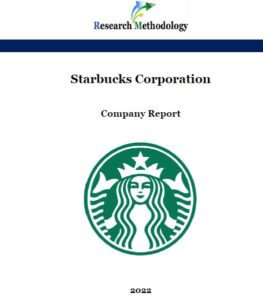
Founded in 1985 by Howard Schultz, Starbucks Corporation (NASDAQ:SBUX) currently operates in more than 34,000 stores in 84 markets according to its mission statement “to inspire and nurture human spirit – one person, one cup and one neighbourhood at a time”. Starbucks Corporation brand portfolio consists of Teavana, Tazo, Seattle’s Best Coffee, Evolution Fresh, La Boulange and Ethos and it sells coffee, tea, other beverages, and a variety of food products. There are two formats of Starbucks stores: company-operated and licensed stores. By the end of fiscal year of 2021, Starbucks had 17,133 (51%) company-operated stores and 16,700 (49%) licensed stores. As of October 2021, Starbucks had approximately 383,000 employees worldwide, including 245,000 employees in the US. The world’s largest coffeehouse chain refers to its employees as partners. Starbucks results for fiscal 2021 demonstrate the overall strength and resilience of the brand. Consolidated revenues increased 24% to USD29.1 billion in fiscal 2021 compared to USD23.5 billion in fiscal 2020, primarily due to business recovery from the COVID-19 pandemic. Also contributing to the increase was USD576 million of incremental revenue attributable to the extra week in fiscal 2021. Starbucks business strategy is associated with providing customers a Starbucks Experience, i.e. a ‘third place’ experience away from work and home, where people can have quality time with friends or alone enjoying quality coffee, beverages and fresh food. Currently, the company is following international business expansion strategy with a particular focus on China and Asia Pacific market segment. Starbucks is an acknowledged leader in the industry in terms of exploiting information technology and technological developments. The company has adapted mobile apps for the promotion of its brand and sales of products earlier than the competition. Starbucks app offers multiple features such as store locator, nutrition-based information and rewards program. Moreover, ‘MyStarbucks Signature’ initiative…
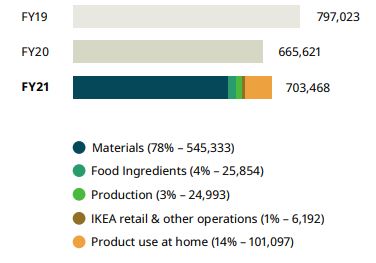
IKEA Corporate Social Responsibility (CSR) efforts are led by Chief Sustainability Officer, Lena Pripp-Kovac. Furthermore, retail managers at every country are also Corporate Sustainability Officers (CSO). The home improvement and furnishing chain started to research CSR reports under the title People & Planet Positive starting from 2012. IKEA CSR efforts and activities comprise supporting local communities, educating and empowering workers and addressing the issues of gender equality and minorities within the company. Moreover, the global furniture retailer works to reduce its energy consumption and derive energy from alternative sources. Sustainable sourcing represents an additional CSR issue that IKEA aims to address within the scope of its operations. CSR Programs and Initiatives IKEA Supporting Local Communities IKEA Group operates 422 stores in 50 markets around the world.[1] The home improvement and furnishing chain aims to cause positive impact on local communities, where its stores are located. Packing event organized by all IKEA stores in Sweden involved customers and representatives from Save the Children to prepare more than 37,000 welcome backpacks filled with toys and other products for children In UK, IKEA has planted one million trees in communities across the country In Australia, IKEA Perth and IKEA Adelaide employees contribute to the improvement of the environment in which children live and develop. IKEA Educating and Empowering Workers Starting from January 2015, IKEA has introduced a new hourly wage structure that concentrates on the needs of its employees, rather than market standards. The furniture retailer has launched My Learning online system that provides employees at all levels access to face-t-face and digital learning solutions. Employee Health and Safety at IKEA In 2021, the furniture retailer introduced a common solution for reporting incidents and accidents that’s easily accessible for all co-workers The number of accidents at IKEA was reduced by…

Increasing popularity of ecosystem thinking in business has not gone unnoticed by the Swedish furniture chain as well. Currently, IKEA ecosystem is cantered around the notion of smart home. The Swedish furniture chain is investing in the new unit and expanding the range of products “which currently includes smart light bulbs, smart plugs, and other connected devices to automate home control.”[1] Named as Home Smart, the new full-fledged business unit is dedicated to smart home products. In other words, increasing numbers of smart home devices are being added into IKEA ecosystem. It can be forecasted that IKEA ecosystem is going to be aggressively expanded with hardware products that can be effectively paired with smart home technologies such as Google’s Nest and Amazon’s Alexa. James F. Moore, economist who coined the term business ecosystem defines the following four evolutionary stages of business ecosystem: birth, expansion, leadership and self-renewal. The evolution of IKEA ecosystem according to this concept is taking place in the following manner: 1. Birth. The world’s largest furniture retailer has already identified smart homes as the basis of its ecosystem. The choice of smart home as a basis of ecosystem is strategically appropriate taking into account increasing integration of internet into various aspects of daily life and chores. 2. Expansion. The company has developed a wide range of innovative products such as Symfonisk WiFi bookshelf speakers and lamps, Riggard LED lamp with wireless charging, Tradfi remote control and others that are considered as smart home products. Furthermore, the latest IKEA additions to smart home concept include electric blinds that go up and down at pre-programmed times and smart air purifiers. 3. Leadership. The furniture retailer is communicating its vision to internal and external stakeholders to strengthen its leadership position in home improvement industry with the focus on innovative products.…
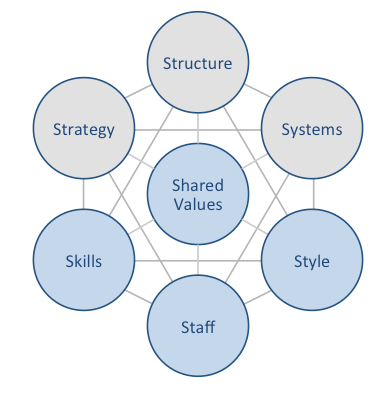
IKEA McKinsey 7S model explains how individual elements of businesses can be aligned to increase the overall effectiveness. McKinsey 7S framework considers strategy, structure and systems as hard elements, whereas shared values, skills, style and staff are accepted as soft elements. The framework stresses the presence of strong links between elements in a way that a change in one element causes changes in others. As it is illustrated in figure below, shared values represent the core of IKEA McKinsey 7S framework. This is because shared values guide employee behaviour with effects on their performance and ultimately on the bottom line for the business. McKinsey 7S model Hard Elements in IKEA 7S Model Strategy IKEA business strategy is based on the IKEA Concept, which is built upon the combination of function, quality, design and value – always with sustainability in mind. Moreover, the Swedish furniture chain offers cost advantage value for customers. Accordingly, IKEA business strategy involves offering increasing variety of products for the lowest prices. Regular engagement in new market development and benefiting from strategic alliances constitute additional pillars of IKEA business strategy. Structure IKEA organizational structure is unique and highly complex. The home improvement and furnishing chain maintains uniqueness and complexity its corporate structure in order to pay less taxes. The company can be divided into three large groups: franchise, range and supply and industry. Large scale of the business that integrates 11 franchisees operating in more than 500 locations in 63 countries[1] necessitates hierarchical organizational structure. Nevertheless, the Swedish furniture chain has proved to be successful in overcoming common weaknesses of hierarchical organizational structure such as high level of bureaucracy and lack of flexibility of the business. Systems IKEA business relies on a set of systems. These include employee recruitment and selection system, team development and orientation…
